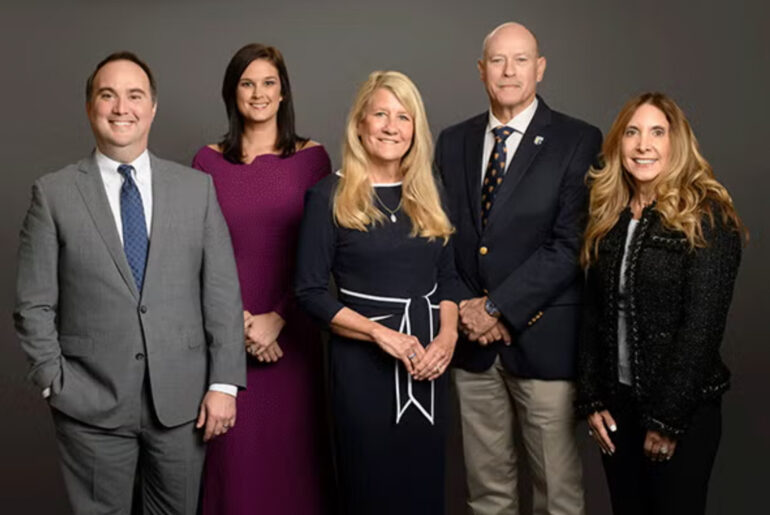The following is part of the conversation I had with Jordan Weber on last week’s Any Given Monday.
MB: Give us kind of a brief history of how you ended up becoming indoor golf’s poster child.
JW: I graduated from University of Northern Iowa. I continued to get better throughout my entire year in college, all my years in college. My senior year, I had my best year ever. I never finished outside the top 15 except for the regional tournament. I was the only player in UNI history to qualify for the regional tournament, which I’m really proud of.
I played professionally for three and a half years. I got off to a good start. I was playing some mini tour events and doing well on those and then, you know, my hands just stopped working: I got the yips with the putting and it just went spiral downhill very quickly from there. I didn’t switch to the long putter because I had the stigma against it and you know, looking back, that was stupid. I should have just went to the long putter. Maybe I could have survived. I always think there’s a plan for me and, you know, it’s working out in ways that I never could have imagined.
MB: How did you come to find out about the NEXT Golf Tour and start playing on that tour?
It started with me and my brother-in-law looking at starting an indoor golf business. We wanted to test out launch monitors to see which ones were good. I wanted something that was extremely accurate. We started out with a Uneekor launch monitor and paired it with GS Pro.
I started playing the simulator golf tour and, you know, I started out I was finishing 20th or 30th every tournament. But I was really determined. I kind of started figuring it out and I started winning–and winning a bunch of them. They have a world ranking system and so I got to number one in the world, which I thought was pretty cool.
Then I heard about this NEXT Tour. Somebody mentioned that, hey, you can win a bunch of money. And I was like, yeah, whatever. Probably not true. You know, you hear about these things all the time. And so I started looking into it a little more. I’m like, it kind of seems legitimate.
I went to my wife. I was like, “you know, like I’m doing pretty well in this simulator league. It’s $130 to get in this (NEXT) tournament. I know I shouldn’t probably spend the money to do that, but do you care if I just try it?” And she’s like, “Yeah, go for it.”
And, you know, I made my money back. And the first one I finished 30th or something. And then the next one I did a little better. And then the third one I won, you know, $30,000 just like that. And it’s like, whoa! Then you start looking at the standings, it’s like, maybe I could win this whole thing.
MB: Can you take me back to that final tournament at PGA West where everything’s on the line, it’s come down to your back nine and you absolutely excel feeling all of those emotions. What was that like?
JW: I think I felt so much pressure mainly because I had never gotten the opportunity to play on the PGA tour or the DP World Tour, or even the Korn Ferry Tour, or any level like that. I never had gone to a USGA U.S. Amateur, U.S, Mid-Amateur. With golf being this huge thing to me like this super passion of mine and never getting to do that and you know, being out of the game for 10 years, it was like I thought it was never ever going to happen.
It was hard for me to sleep that week. I was practicing all the time. I literally got up at four in the morning every single morning and I had to drive down to our warehouse. I’d get there at like five o’clock and I’d practice eight hours a day. I was practicing because I wanted it so bad.
I just wanted that opportunity to do it once–to go to a DP World Tour event. So I had been playing the course well. I was shooting scores in practice that were lower than what the leading score was. So, it’s like I knew I could do it and then I started out, you know, I was fine in practice, you know, a little nervous and I was kind of tired. But then when you hit go, like starting your round, it’s like the heart rate just jumps like 20 beats per minute, right? When you hit that button, it’s like, oh, this is real. All right, I got to go.
And I made birdie on that first hole, but then a terrible bogey on the second hole. Three-putt from 20 feet. It’s like, oh no, you can’t do that. Like, you can’t waste any strokes. And so I was really disappointed. And then I started hitting it well. I made one more birdie, but then it was like par-par. I couldn’t make the putts. Like, they’re just barely going by.
And by the eighth hole it was like, “I didn’t do it.” I had it I had that feeling like I’m not going to do it. My whole family was excited, you know? I just felt like everybody’s excited for this. I was excited and I can’t do it. And I think that little bit of let go right there is what I needed to get me going again, where I was just trying to control the situation too much–trying to force it.
I made a little adjustment in how I was aiming because it’s auto aim. I was missing them all on the high side. So, I’m like, I’m just going to aim just a little bit closer to the hole. And they all started going in and then made a ton of birdies.
It still makes me emotional thinking about it because I wanted it so bad and it happened. And I got to experience my lifelong dream.
MB: You got to play in Germany on the DP World Tour and then across Europe for Challenge Tour. What was that transition like? How did you approach that?
The challenge for me when I do that is I don’t play a lot of rounds of golf. I don’t even have a membership outside. My only rounds of golf are at a par-3 course with my kids. You know, like, that’s what I play. So before going over there, I did go to a course and got hooked up with playing privileges for the year and I tried to play as much as I could and practiced as hard as I could. It is just a different animal.
I got over there. I had a little bit of bad luck, I will say. I got there on Saturday before the DP World Tour event and my clubs didn’t come until Wednesday morning. So I was over there just like putting and chipping with rental clubs before the tournament–before the biggest tournament of my life and I can’t even play with my own clubs.
I got to play with Soren Kjeldsen, who was making his 700th start and they were making a big deal of that. I got put right in the middle of the morning wave, like the best tee time. I was gonna be in the TV coverage, which I was like, whoa, this is my dream! I want to go play these events and have somebody actually care how I do. And it and that happened.
MB: Alright, that brings us to this moment and Season 4 on the NEXT Golf Tour. The format’s a little different. Can you talk about that and tell us what you’re looking forward to?
JW: There’s a lot of money on the line and when you’re playing just 18 holes, I don’t think you always identify the best player. So, you know, having 36 holes helps identify the best player. It also adds a little bit of pressure when you’re playing 18 holes and you’re not expecting to win, you don’t really feel the pressure until the last two or three holes.
But if you’re playing 36 holes and you have a good first round, you have that whole second 18 where you’re feeling the pressure. It does change things. They switched to manual putting this year, so I’m like hard in the simulator trying to learn how to read the greens. But I think that’s a good change, too.
MB: And do you feel like adding another round gives you an advantage?
JW: They sent out surveys after each NEXT Tour round and I asked for 54 holes!
MB: You’ve made over $100,000 on the NEXT Golf Tour. How has that affected your life?
JW: Yeah, I mean that the money I won I used to go over to Europe to play in the DP World Tour, and then start that indoor center. I wouldn’t have been able to do that without the money I made on the NEXT tour. So, you know, it has changed my life. It’s given me opportunities that I wouldn’t have had otherwise. It is life-changing when you do well in these events.







